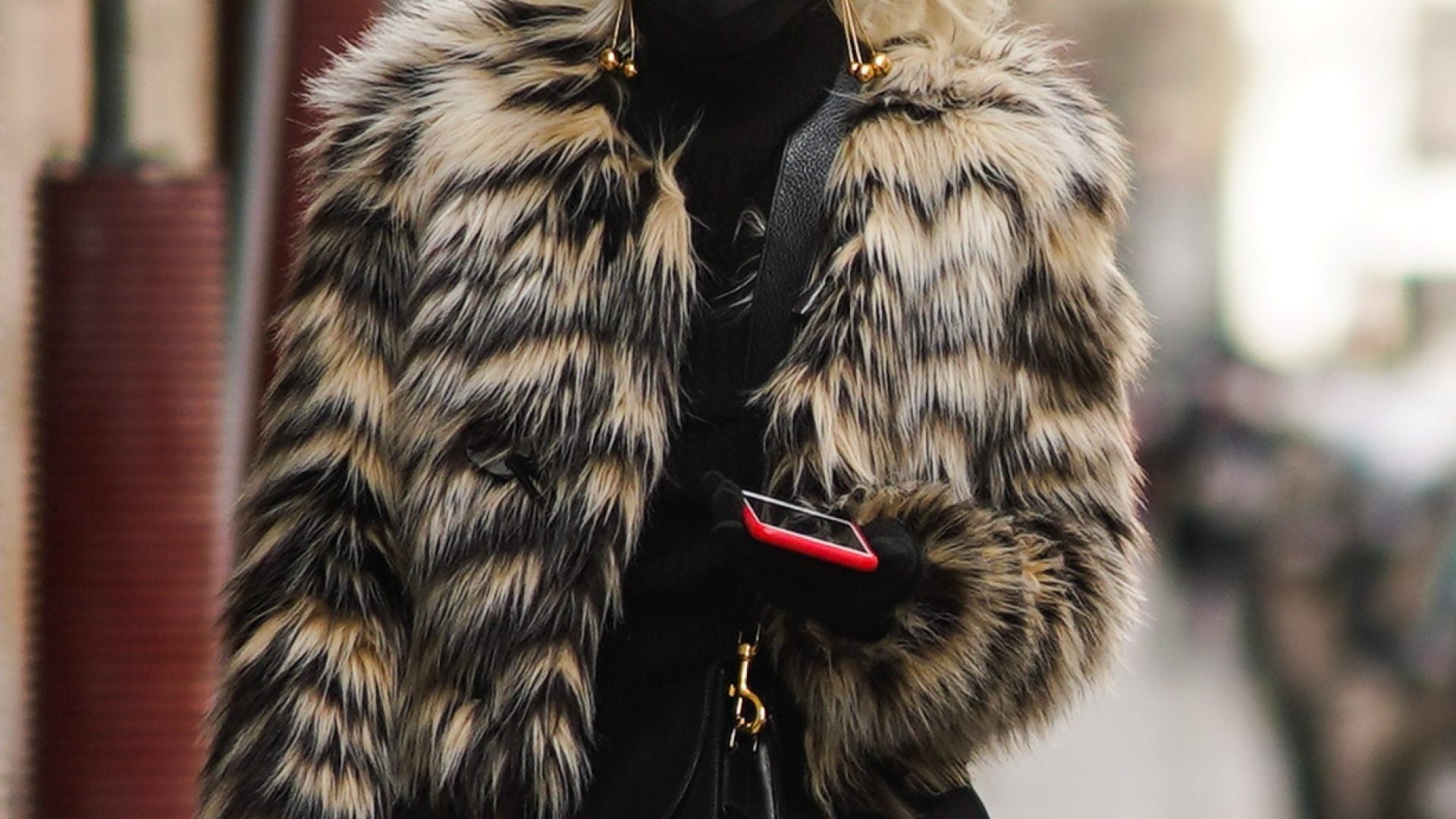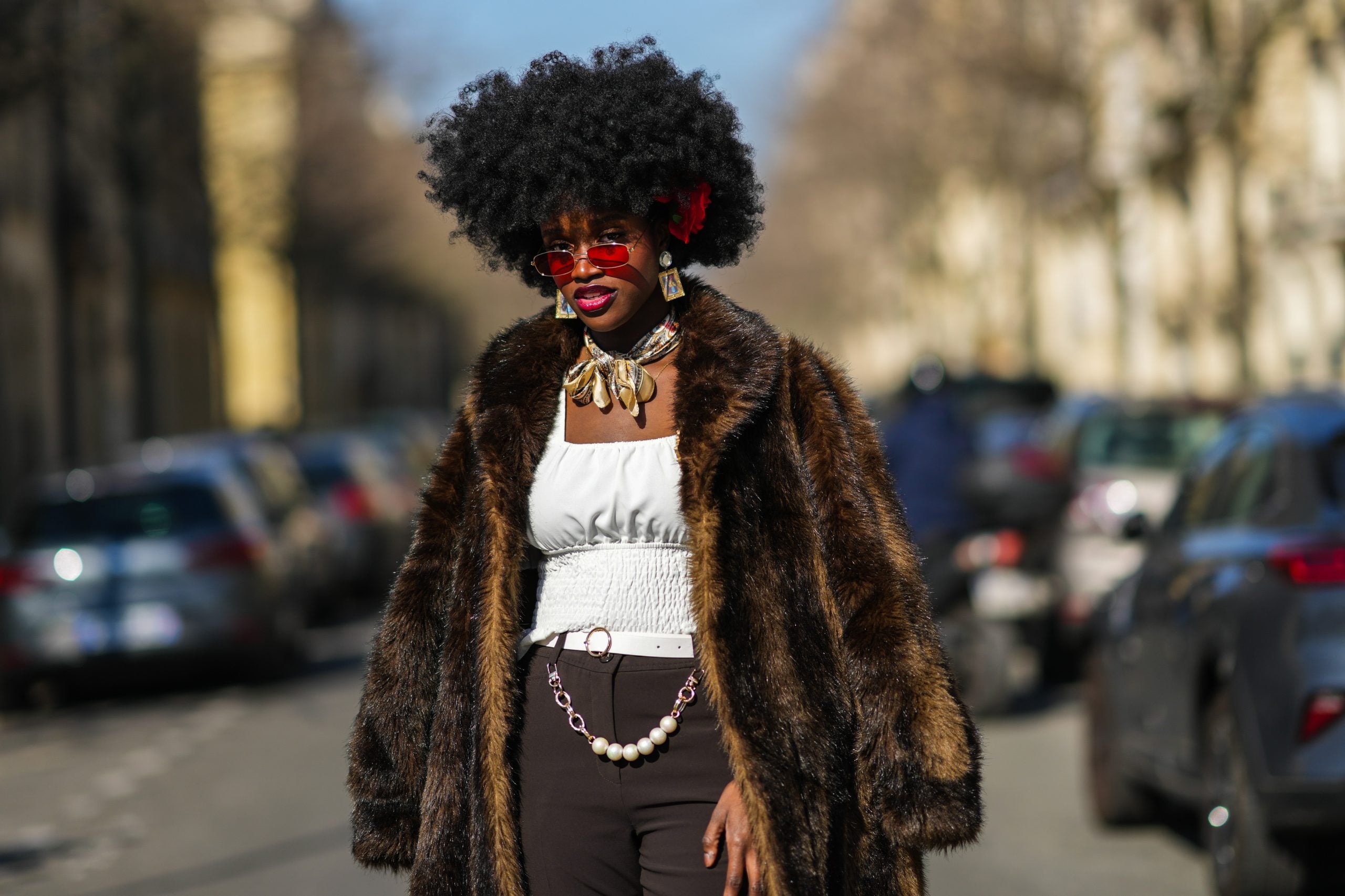
Put on a fur coat, some gold jewelry and red lipstick, and you might hear someone jokingly call you a mob wife. The mob wife aesthetic is the latest TikTok trend that borrows elements of multiple cultures and flattens them to digestible caricatures. As this year marks the 25th anniversary of the debut of The Sopranos, many suspect this is the result of a concerted effort to promote the show. This might partly explain the ubiquity of the trend, but TikTok users started calling it as early as October 2022. “Today I’m going to show you how to dress like a mob wife,” Sarah Arcuri, the self-proclaimed Mob Wife Aesthetic CEO, shared in a recent video. With that, “clean girl is out, and mob wife aesthetic is in,” others proclaimed.
The Mob Wife Aesthetic essentially glamorizes the lifestyles of fictional mob wives like Carmela Soprano, the wife of mob boss Tony Soprano, and Adriana La Cerva, Christopher Moltisanti’s fiery partner. Movies like The Godfather trilogy and Scarface further illustrate the costumes that were integral to the image of opulence. The trend holds a mirror to the ‘80s, a decade during which fashion designers favored big hairstyles, animal prints, padded shoulders, large fur coats and stacks of gold jewelry. In today’s parlance, the mob wife rejects quiet luxury; her closet is maximalist and expressive and she has the attitude to pull it off.

Sicilian women took credit for the trend, but as other non-Italian women started sharing their mob wife looks, claims of cultural appropriation began surfacing. Some pointed out the stereotypes and misconceptions associated with adopting the mob wife aesthetic without acknowledging its historical context. Others called out the lack of authenticity in adopting social media trends. “Our culture is not your costume,” Ang Ela said in a video.
As these voices grew louder, white women were subsequently called to recognize how they themselves have appropriated marginalized cultures throughout history. “It would seem that YT [white] women were getting their first taste of cultural appropriation,” fashion writer Marjon Carlos wrote in her newsletter Notes From Auntie’s Desk. “a scourge that Black, brown, and indigenous women had been trying for YEARS to rally against,” she added. Liz Marquis echoed the sentiment in a viral video, explaining how the “mob wife look” itself borrows from Black culture: “Italian culture is not your costume so put down the nameplate necklace, hang up the hoops, get your hair out of that slicked back bun.”
The issue with reducing historical modes of dress to social media prompts is that it often erases the cultural contributions of marginalized groups. What is missing from the conversation is the influence of Black culture on the mob wife aesthetic. Gold chains and fur coats are emblems of hip-hop style, yet sporting that combination earned artists such as Lil’ Kim, Mary J. Blige, and Missy Elliott the labels “urban” at best and “ghetto” at worst. The look gained traction nonetheless (as it often happens when Black people set trends), serving as the precursor of streetwear and expanding our global style lexicon. Even as fashion houses such as Chanel, Fendi and Isaac Mizrahi copied their styles to launch a series of “hip hop-inspired” collections in 1991, the establishment still categorized that way of dressing as bad taste. “Rap street style, with its jumble of jewelry and tongue-in-cheek references to high fashion…it’s already a form of fashion self-mockery. On the runway it’s a joke on top of a joke,” a 1991 New York Times story reads.
Similarly, it is impossible to discuss the mob wife aesthetic without also giving credit to Latines, for whom gold hoop earrings are considered a “rite of passage” that is passed down from many generations. By failing to include these groups in the conversation, the mob wife aesthetic is poised to become another problematic marketing ploy. In a world saturated with fashion trends, it is a missed opportunity to tell nuanced stories that restore the dignity of marginalized people and bridge cultures together.